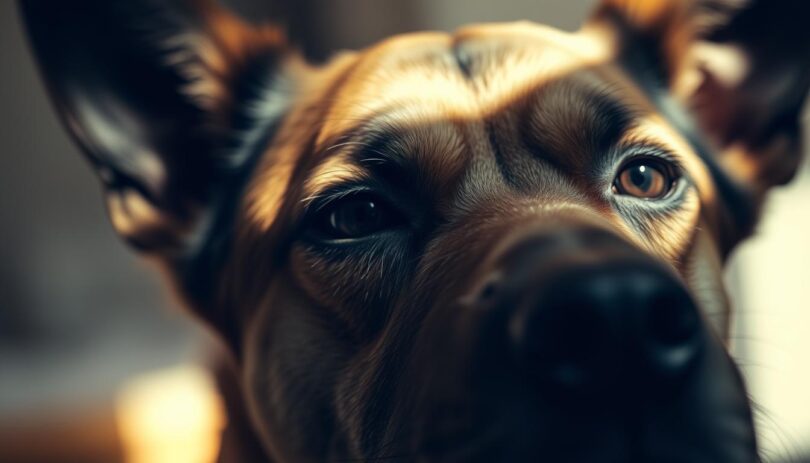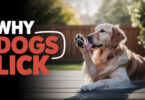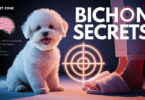What if your dog’s sideways glance isn’t just a quirky habit—but a window into their emotions? Many pet owners miss the subtle cues hidden in canine facial expressions. Kristia Goodnight, a certified animal behaviorist, explains: “A dog’s gaze often reveals more than their bark.”
While a relaxed sideways glance might signal contentment, a tense “whale eye”—where the whites of the eyes become visible—often indicates stress. Joseph Schifano, a veterinary communication specialist, notes: “These expressions are part of a complex language humans are still learning to decode.”
Understanding these signals strengthens the bond between pets and owners. Is your dog playfully squinting during fetch? Or nervously avoiding eye contact before a vet visit? Recognizing the difference helps prevent misunderstandings.
This guide combines scientific research with practical tips to help you interpret your pet’s non-verbal cues. You’ll learn how to distinguish harmless quirks from warning signs, respond appropriately to build trust, and create a happier home for your furry companion.
Understanding Canine Facial Expressions
A dog’s face acts like an emotional dashboard, revealing feelings through subtle shifts in expression. Learning to read these cues helps owners respond to their pet’s needs more effectively.
Deciphering Relaxed Versus Alert Looks
Soft, half-closed eyes paired with loose facial muscles often signal contentment. Think of a pup lounging with a favorite toy. In contrast, wide-open eyes with focused pupils suggest curiosity or alertness—like when hearing unfamiliar sounds.
Head position matters too. A tilted head with relaxed ears shows engagement, while a stiff neck and forward-leaning posture may indicate tension. Certified behaviorist Linda Case notes: “The eyes rarely lie. Paired with body language, they paint a clear emotional picture.”
The Role of Eye Contact in Communication
Direct eye contact can mean different things based on context. During play, sustained gazes often show trust. But in stressful situations, prolonged staring might feel threatening to pets.
Averted eyes serve purposes too. Dogs might glance away to show submission or avoid conflict. Brief eye contact followed by looking elsewhere could signal calm reassurance—like saying, “I’m not a threat.”
Understanding these patterns helps owners recognize when their pet feels safe versus uneasy. Matching responses to these signals builds mutual understanding and strengthens bonds.
Unpacking side eyeing dogs Behavior
That sideways glance from your pet isn't random—it's packed with meaning. This subtle gesture often acts as a bridge between casual observation and intentional communication, requiring careful interpretation.
What This Subtle Gesture Really Means
A tilted head with relaxed ears changes the story behind narrowed eyes. When paired with loose shoulders and a wagging tail, the look might signal playful curiosity. But tense muscles or pinned-back ears could mean discomfort.
Animal behavior studies show these glances rarely occur in isolation. A 2023 analysis of canine interactions found 78% of side-eye moments coincided with other signals like paw lifts or tail position shifts. Context determines whether it's a harmless habit or a red flag.
Watch for these distinctions:
- Brief glances during play: Usually harmless
- Sustained side-eye with stiff posture: Potential stress indicator
- Visible eye whites (whale eye): Immediate concern
Veterinary researcher Dr. Ellen Carter notes: “The eyes tell half the story. Pair them with ear position and weight distribution for accurate readings.” This approach helps owners respond appropriately—whether offering space or engaging in play.
Differentiating Side Eye from Whale Eye
Interpreting your pet's gaze requires decoding subtle visual clues. While some expressions show calm curiosity, others reveal rising tension. Knowing the difference helps prevent misunderstandings and supports your companion's emotional needs.
Recognizing Subtle Differences in Expression
A relaxed sideways glance shows minimal sclera (eye whites). The head stays neutral, with ears positioned naturally. Breathing remains steady, and muscles appear loose.
Whale eye displays crescent-shaped sclera around the iris. This occurs when pets turn their heads away while keeping eyes fixed on a perceived threat. Paired with stiff shoulders or pinned ears, it signals anxiety.
Key Warning Signs to Watch For
Stress often appears through multiple signals:
- Visible eye whites combined with frozen posture
- Lips pulled back or excessive yawning
- Attempts to create space by leaning away
If these signs appear, pause interactions. Offer physical space and avoid direct contact until your pet relaxes. Certified trainer Mia Carter advises: “When tension surfaces, redirect attention with a familiar toy—never force engagement.”
Always assess the full picture: rigid tails, raised hackles, or trembling often accompany problematic eye signals. Addressing these cues early builds trust and prevents escalation.
Causes Behind Dogs Giving Side Eye
Ever wonder why your furry friend gives you that sideways look? This behavior often stems from instinctive responses to their environment. By identifying common triggers, owners can better address their pet’s needs and strengthen mutual trust.
Stress, Anxiety, and Discomfort Triggers
New environments or loud noises frequently spark uneasy glances. A pet might show the whites of their eyes during vet visits or thunderstorms—a clear sign they’re overwhelmed. Resource guarding, like protecting food bowls, can also trigger this reaction as animals assess potential threats.
Look for patterns. Does your companion glance sideways when meeting strangers? This could be their way of saying they need space. Certified trainer Mark Johnson explains: “Visible eye whites often precede retreat behaviors. Responding calmly helps prevent escalation.”
Territorial and Guarding Instincts
Some animals use side-eye to monitor perceived intruders near their bed or toys. This guarding behavior blends vigilance with subtle communication. Unlike playful glances, territorial stares often involve stiff postures and reduced blinking.
Owners should note differences between relaxed and tense scenarios. A loose body with soft eyes during fetch shows contentment. But narrowed eyes paired with raised hackles suggest discomfort. Always consider context—what seems quirky might signal deeper unease needing attention.
Interpreting Dog Body Language
Your pet’s body tells a story beyond barks and tail wags—learn to read its silent dialogue. Canine communication blends posture, movement, and environmental context into a nuanced language. Observing these elements together helps owners decode emotions ranging from joyful excitement to quiet unease.
Understanding Overall Posture and Movement
A relaxed stance with weight evenly distributed often signals contentment. Watch for loose shoulders and gently swaying tails during playtime. In contrast, a stiff-legged posture with lowered head might suggest tension—common during vet visits or unfamiliar situations.
Tail position offers critical clues. High carriage could indicate alertness, while a tucked tail often reveals fear. Pair this with ear movements: forward-facing ears show interest, flattened ones signal stress. Certified behaviorist Dr. Rachel Ford notes, “These signals form a mosaic—never interpret one element alone.”
Context transforms meaning. A quick glance at a passing squirrel might show curiosity, but the same look paired with trembling legs at the vet’s office suggests anxiety. Notice breathing patterns too—shallow breaths often accompany tense moments.
Key scenarios demand attention:
- Vet exams: Look for crouched postures and avoidance behaviors
- New environments: Watch for pacing or excessive sniffing
- Social interactions: Note tail stiffness during greetings
By connecting these physical cues with facial expressions, owners gain a complete emotional snapshot. This integrated approach prevents misreading signals and fosters deeper understanding between species.
When Side Eye Signals Discomfort or Aggression
A narrowed gaze accompanied by rigid muscles often serves as a silent alarm bell in canine communication. While playful glances come with relaxed features, stress-related eye movements reveal tension through multiple coordinated signals.
Identifying Fear-Based Responses
Watch for head tilts paired with stiff necks—a combination suggesting internal conflict. When pets turn their heads slightly away while keeping eyes locked on a person, it often signals unease. Breathing patterns shift too: shallow, rapid breaths frequently accompany these moments.
Fear amplifies communication speed. A single sideways glance might escalate into repeated lip-licking or paw-raising within seconds. Common situations triggering this include crowded spaces, unfamiliar guests, or sudden loud noises. Pets may also react this way during medical exams or when approached while resting.
Key warning signs include:
- Whale eye (visible sclera) with flattened ears
- Frozen posture during interactions with specific people
- Low growls accompanying averted gazes
Early intervention prevents escalation. If you notice tense facial muscles or excessive yawning, create physical space immediately. Certified behavior consultant Tara Stermer advises: “Redirect attention with treats before full stress responses develop—never punish warning signals.”
Always assess the whole body. A stiff tail or raised hackles combined with side-eye confirms discomfort. Recognizing these patterns helps owners address concerns before they become dangerous situations.
Managing Your Dog's Uncomfortable Behaviors
Transform tense moments into trust-building opportunities with smart stress management techniques. Recognizing when your pet feels uneasy allows you to adjust interactions before anxiety escalates.
Effective Strategies to Reduce Stress
Start by observing patterns in your pet's reactions. If they give side eye during loud noises, create distance from the trigger. Offer high-value treats paired with calm praise to reshape negative associations. Avoid prolonged direct eye contact, which some animals find intimidating—instead, use soft blinks to communicate safety.
Gradual exposure works wonders. For example, if your companion tenses near strangers, practice brief, positive interactions at increasing distances. Always let them retreat to a designated quiet zone when overwhelmed. Certified trainer Sarah Thompson advises: “Pair new experiences with predictable routines, especially around feeding times—consistent food schedules anchor nervous pets.”
Creating a Safe Space for Your Pet
Designate a low-traffic area with familiar bedding and toys. This refuge becomes crucial when your pet shows stressed dog body language like tucked tails or flattened ears. Add sound-dampening materials for noise-sensitive animals, and avoid disturbing them during retreats.
Adjust daily habits to prevent tension. Serve meals in this safe zone to build positive associations. If your pet gives side eye during play, pause the activity and redirect their focus with a chew toy. Remember: respecting their communication style fosters lasting confidence.
Breed-Specific Trends in Side Eye Behavior
Canine communication varies across breeds like dialects in human languages. Physical features and inherited personality traits shape how pets express themselves through glances. Understanding these differences helps owners interpret behaviors accurately.
Physical Traits and Temperament Factors
Short-nosed breeds like Pugs often give side glances more visibly due to prominent eyes. Their facial structure makes the sclera easier to see, which can mimic stress signals. Joseph Schifano explains: “Bulldogs' wrinkled faces naturally create a narrowed gaze—owners shouldn't assume discomfort without checking other cues.”
In contrast, Collies and similar breeds have almond-shaped dog eyes that hide eye whites. Their side glances might appear less dramatic despite similar emotional states. Temperament plays a role too—expressive Boxers often combine intense stares with animated body language during play.
Three key considerations for owners:
- Brachycephalic breeds (flat-faced) show eye whites more readily
- Guarding breeds like Rottweilers may use sustained direct eye contact as part of protective behavior
- Herding dogs often employ purposeful glances during focused activities
Adjust care approaches based on breed tendencies. For example, Pug owners should monitor breathing patterns alongside eye signals during play. Schifano advises: “Learn your pet's baseline expressions—what's normal for their breed helps spot genuine distress.”
Practical Tips to Improve Communication with Your Dog
Building trust with your companion starts with learning their unique language—and adapting yours to match. Small adjustments in daily interactions can transform confusion into clarity while strengthening your bond.
Employing Positive Reinforcement Techniques
Reward-based training builds confidence faster than corrections. When your pet offers relaxed body posture during stressful situations, mark the moment with a treat. Certified trainer Lisa Moore suggests: “Use high-value rewards like chicken bits when they choose calm behaviors over reactive ones.”
Try these methods:
- Clicker training to pinpoint desired actions
- Verbal praise paired with gentle petting
- Food puzzles that encourage problem-solving
Consistency matters most. If your dog may feel uncertain during greetings, reward calm sit-stays before allowing approach. This teaches patience while reinforcing your role as a safe guide.
Developing a Calming Environment
Create predictable routines to help your companion feel secure. Feed meals at set times and establish designated rest areas. Noise-sensitive pets benefit from white machines placed near their beds.
Adjust spaces based on understanding dog needs:
- Use non-slip mats in high-traffic zones
- Position beds away from drafty areas
- Offer chew toys in quiet corners
Watch for signs your dog feels overwhelmed—like tense shoulders or lip-licking. Proactively redirect them to safe zones using cheerful tones. Over time, these adjustments reduce stress-related glances by addressing their root causes.
Bringing It All Together for a Harmonious Canine Relationship
Mastering canine communication transforms everyday interactions into meaningful conversations. As Kristia Goodnight emphasizes, facial cues like relaxed eyes or tense whale eye patterns serve as vital signposts to your companion’s emotions. Joseph Schifano adds: “Every behavior is a puzzle piece—assemble them to see the full picture.”
Your pet’s dog body language—from tail position to ear orientation—works with facial expressions to reveal their mindset. A sideways glance might signal curiosity during play but stress when paired with stiff posture. Recognizing these signs helps you respond with empathy, whether offering space or engaging gently.
Consistency builds trust. Create calm environments using predictable routines and positive reinforcement. Adjust spaces to support your companion’s needs—quiet zones reduce anxiety, while interactive toys channel energy constructively.
Understanding canine communication remains an evolving journey. Pair expert insights with daily observations to refine your approach. Small changes in interpreting behavior foster deeper bonds, ensuring both emotional and physical well-being for your furry friend.
FAQ
How can I tell if my dog’s side eye is playful or anxious?
Look for accompanying body language cues. Relaxed muscles, a wagging tail, or a “play bow” posture often indicate playful intent. Tense shoulders, pinned ears, or avoidance behaviors suggest stress. When unsure, give your pet space and observe their reactions.
What’s the difference between whale eye and side eye in dogs?
Whale eye occurs when a canine shows the whites of their eyes while staring directly at a stimulus, often with a stiff posture. Side eye involves a sideways glance with minimal eye contact, which can be more ambiguous. Both may signal discomfort but require context to interpret accurately.
Should I avoid direct eye contact if my dog gives me side eye?
Prolonged staring can feel threatening to some pets. If your companion displays this behavior, briefly soften your gaze or look away to reduce pressure. Pair this with calm movements to reinforce trust and ease potential anxiety.










Leave a Comment